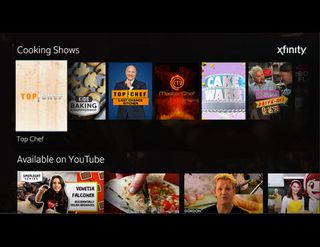Sharpening the Aggregation Edge

Over-the-top video services, once considered an enemy of the pay TV industry, are becoming important partners as traditional multichannel video programming distributors (MVPDs) look to gain and retain customers amid a small but growing cord-cutting trend.
After holding OTT rivals at arm’s length early on, many pay TV providers are now embracing them and stitching them into their core video platforms.
A prime example of this is Comcast’s announcement last week that it will offer a You- Tube app on its X1 set-top box platform later this year. But rather than placing YouTube into its own silo, it will weave the OTT into the X1 platform in a way that lets customers search for YouTube content in the same manner as Comcast’s regular TV shows and video-on-demand fare.
That integration, which ties in support for Comcast’s X1 voice remote, is similar to the one the MSO has already completed with Netflix. Sling TV and its array of international video services is also on deck for integration.
Comcast, which has also tied Watchable, its own ad-based, shortform OTT video service, to the X1 platform, is expected to add more streaming partners to X1 in the months ahead.
Like other MVPDs, Comcast has concluded that it is in a great position to blend its own TV service with OTT, even if some of that content competes with its own.
“We’re an aggregator of aggregators,” Comcast chairman and CEO Brian Roberts said last week at the Morgan Stanley Technology, Media & Telecom conference in San Francisco.
“We’ve been using X1 to just change your whole experience and … merge streaming and traditional television and on-demand,” said Roberts, who also used his time to demo Netflix and the coming YouTube app running on X1.
Notably, Comcast’s YouTube integration will include the full YouTube catalog, including the content from the YouTube Red subscription service. The operator confirmed that the tie-in will not include YouTube TV, the new skinny bundle, live TV service that’s slated to launch later this year for $35.
Comcast’s Netflix integration on X1 has yielded some significant results since its launch late last year. Roberts said more than 30% of X1 subs are “regularly” accessing Netflix via the MSO’s pay TV platform.
“That’s an incredibly quick take rate for something we barely have advertised,” he said, adding that Comcast VOD usage (which now factors in Netflix titles watched via X1) for January 2017 rose 35% year-on-year.
Creating an app and placing it on a pay TV platform is “table stakes,” Roberts said. “What I think is completely different is using voice and having it be integrated.”
About half of Comcast’s pay TV base is now on X1. Roberts said the MSO has distributed some 13 million voice remotes.
Comcast is not alone in hitting on this trend. TiVo, which works with a variety of MVPD partners, has been a pioneer in this area, as it already integrates OTT apps like YouTube, Netflix and Hulu with pay TV services. Dish Network has tied in Netflix, YouTube and Vevo, among other apps, to its Hopper platform.
Verizon Communications is working on a next-generation, IP-based version of Fios TV. The timing of the rollout hasn’t been announced, but Light Reading caught a glimpse of it at last week’s Mobile World Congress show in Barcelona, Spain. In addition to supplying a fresh interface for its baseline products, Verizon will also be looking for the new platform to extend a bridge to OTT services.
Multichannel Newsletter
The smarter way to stay on top of the multichannel video marketplace. Sign up below.
